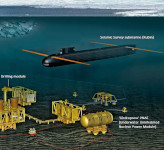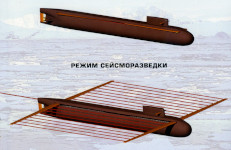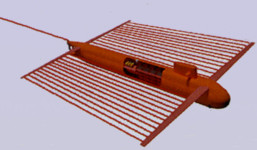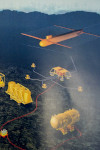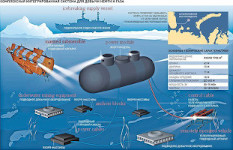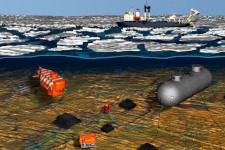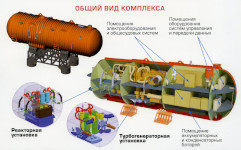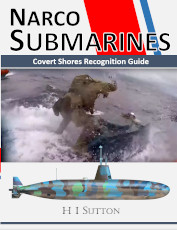Updated with Cutaway. Originally posted May 21 2017 This article relies heavily on the advice of unnamed others. Sincere thanks to everybody who has helped. Information and corrections welcome. Contact the author HERE
Russian Seismic Survey Submarine for Arctic Operations
 This is a unique submarine concept developed by the Rubin design bureau. It is designed to conduct sub-bottom surveys using very low frequency active sonar which can penetrate the sea floor. The receivers for this sonar are mounted on distinctive wing-like structures which project from the sides of the submarine. It’s a large submarine, somewhere between a nuclear attack submarine and a ballistic missile submarine. And the wings are approximately 45m (145 ft) long so the overall width of the boat, with wings extended, is around 100m (330 ft).
This is a unique submarine concept developed by the Rubin design bureau. It is designed to conduct sub-bottom surveys using very low frequency active sonar which can penetrate the sea floor. The receivers for this sonar are mounted on distinctive wing-like structures which project from the sides of the submarine. It’s a large submarine, somewhere between a nuclear attack submarine and a ballistic missile submarine. And the wings are approximately 45m (145 ft) long so the overall width of the boat, with wings extended, is around 100m (330 ft).
Original artwork. CLICK IMAGE FOR HIGH-RESOLUTION:
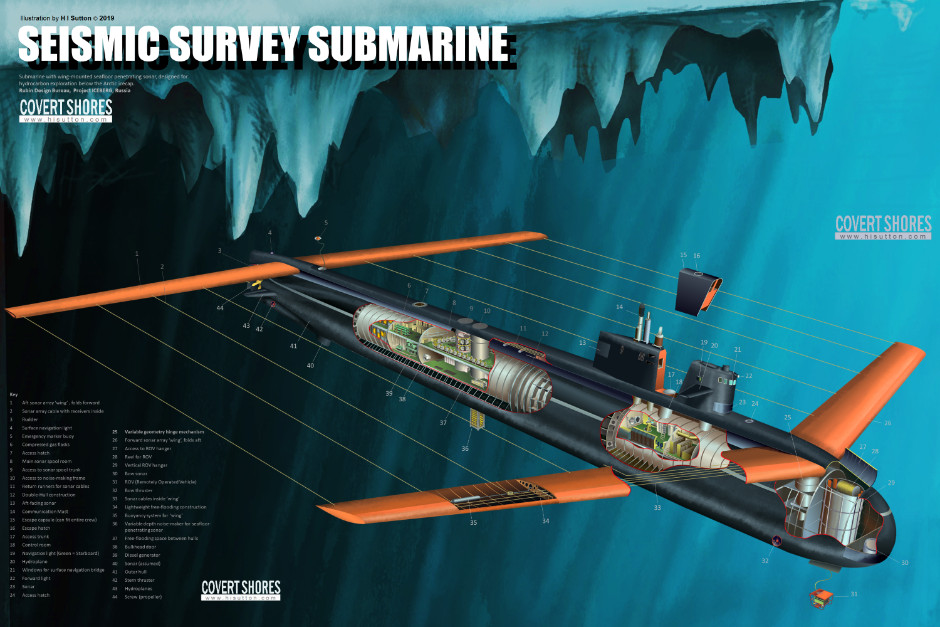
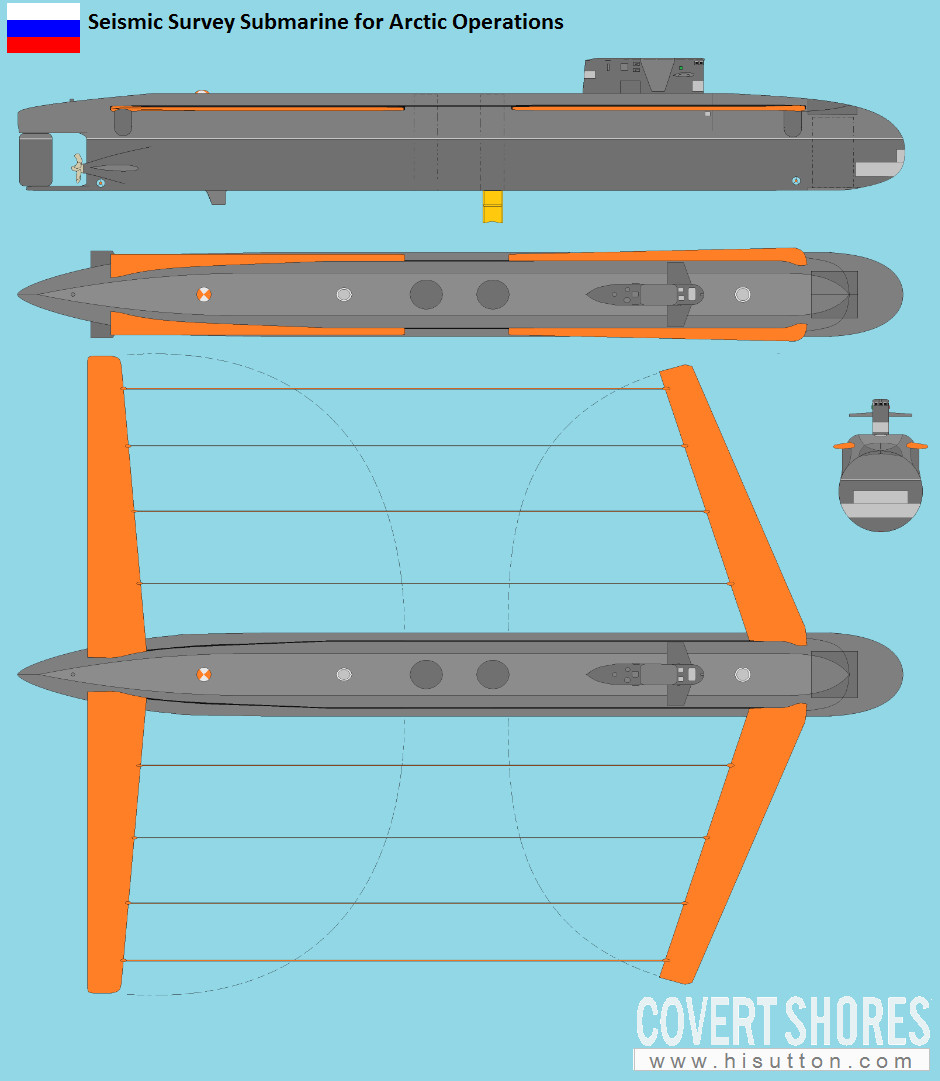

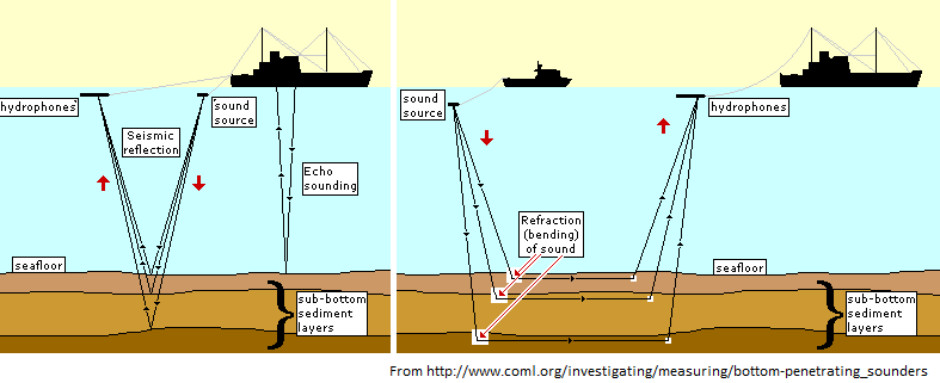
General concept of sub-bottom profiling. Source coml.org
Get The essential guide to World Submarines
This Covert Shores Recognition Guide Covers over 80 classes of submarines including all types currently in service with World Navies.Check it out on Amazon
Despite their appearance, the ‘wings’ are unlikely to actually have a lift effect on the submarine. Water is a lot like air (reference fluid dynamics), but submarine use their displacement instead of lift to change their depth (think of an airship in reverse). A submarine however wants to remain at a stable depth. Using wings (termed hydroplanes) to regulate depth uses a lot of energy and creates flow noise which is not ideal for sonar use. Additionally, suddenly diving can be dangerous. So the sonar ‘wings’ would logically be designed to have no effect on depth.
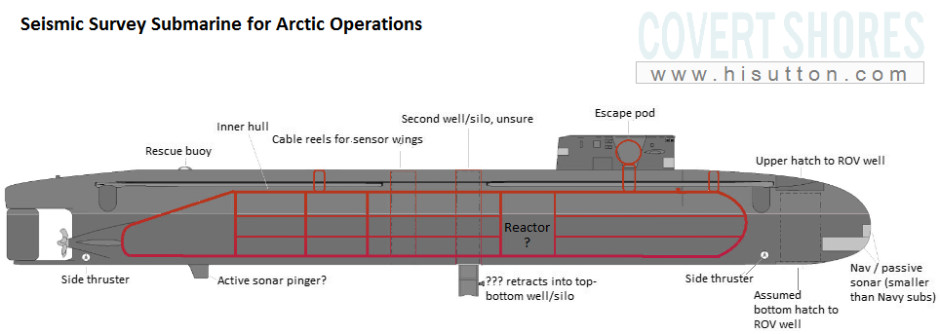
Sub-bottom sonar surveying would allow the optimum placement of objects on the sea floor, such as drilling rigs and anchors for underwater nuclear reactors. In the defense context, it could detect buried objects and help placement of military sensors or communications.
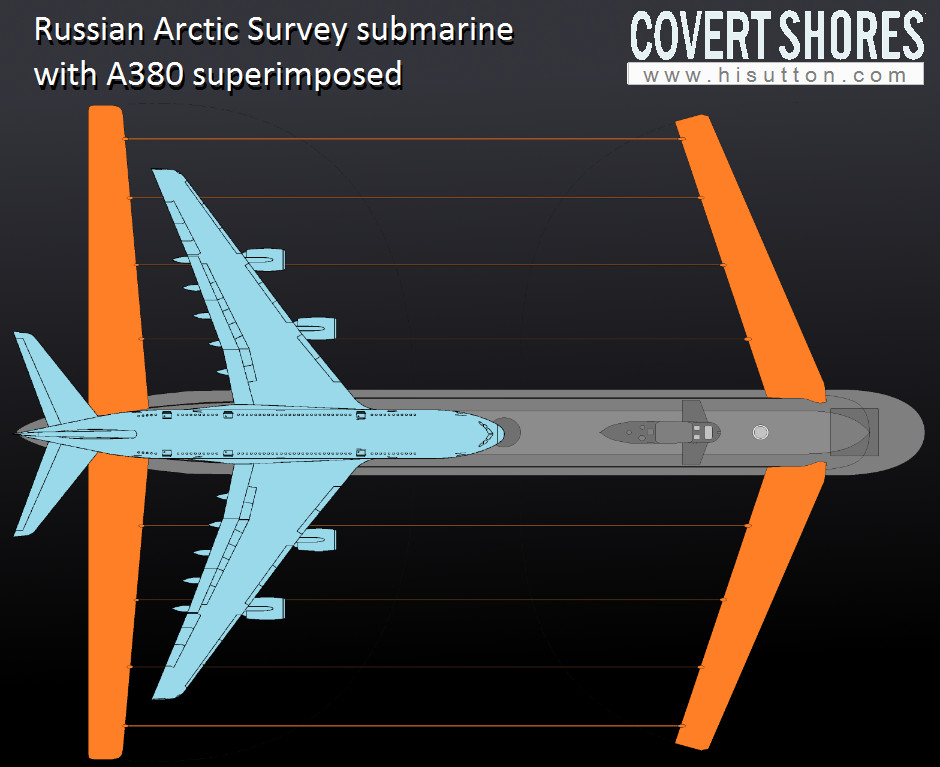
Normally sub-bottom profiling is conducted by a surface ship. The only reason to mount it on a submarine is to operate under the ice cap. However, one complication is that much of the Arctic Shelf is very shallow (especially in the East Siberian Sea) and the ice depth throughout is highly variable with vertical ice pillars that can extent for hundreds of meters beneath the surface, or to the sea floor. So a submarine that is 100m wide is going to have much greater difficulty maneuvering than other submarines.
Talking to Russian media in April 2017, in Chief Designer CDBMB Eugene Toporov of Rubin is quoted as saying that construction will start in 2020. The boat will cost approximately 40% of a regular ‘combat submarine’ thanks to the lack of weapons systems, although this estimate appears open to challenge.
Specifications
Surface displacement (standard): 13,820 tons
Length: 135.5 meters
Beam (standard): 14.4 meters
Width with wings extended: Est. 100 meters
Operational diving depth: 400 m
Endurance: 90 days
Max speed: 12.6 knots
Survey speed: up to 3 knots
Armament: None
Complement: 40
Seismic arrays: 3D array 100 meters x 100 meters plus towed 2D array
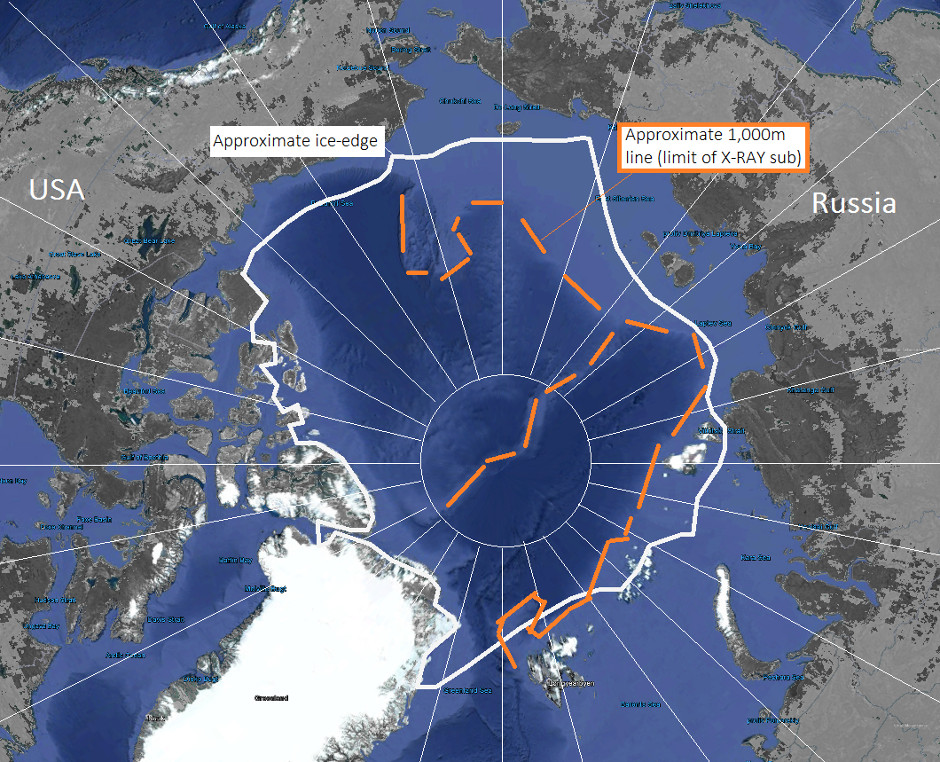
The Arctic Ocean has two basins in the middle, divided in half by a massive mountainous ridge. The basins are surrounded by shelfs where the sea floor drops from about 1,000m down to around 4,000m. Given that the midget submarines carried by Belgorod can dive to about 1,000m, these shelves represent the edge of where the sensor arrays might be placed. Additionally there are areas with mountain peeks at less than 1,000m where arrays could be placed. See also this map)
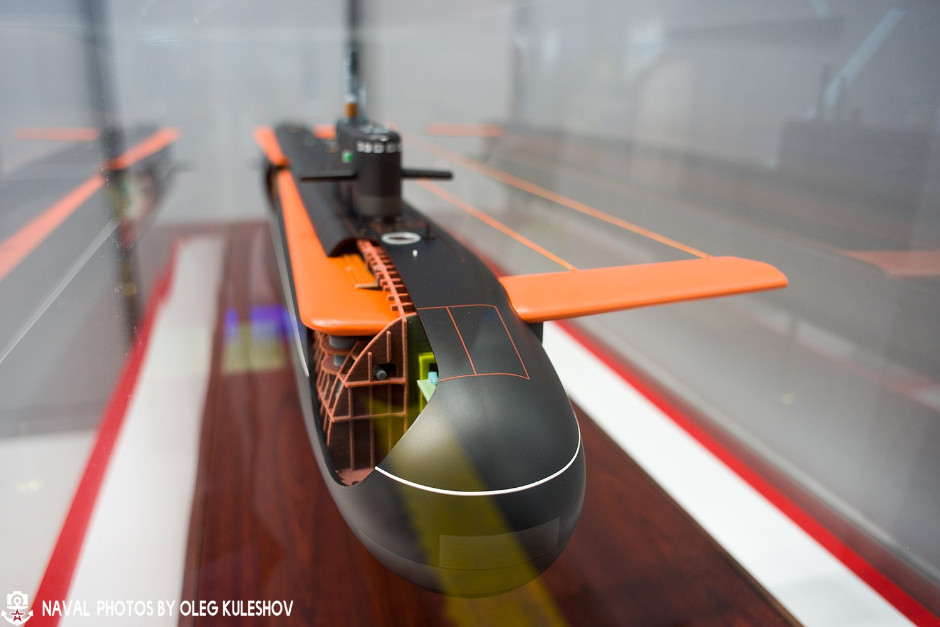
Note that the extended wings on the model are only about half length.
The ultimate book of Special Forces subs Covert Shores 2nd Edition is the ONLY world history of naval Special Forces, their missions and their specialist vehicles. SEALs, SBS, COMSUBIN, Sh-13, Spetsnaz, Kampfschwimmers, Commando Hubert, 4RR and many more.
Check it out on Amazon
A series of cable spools is visible inside the hull:
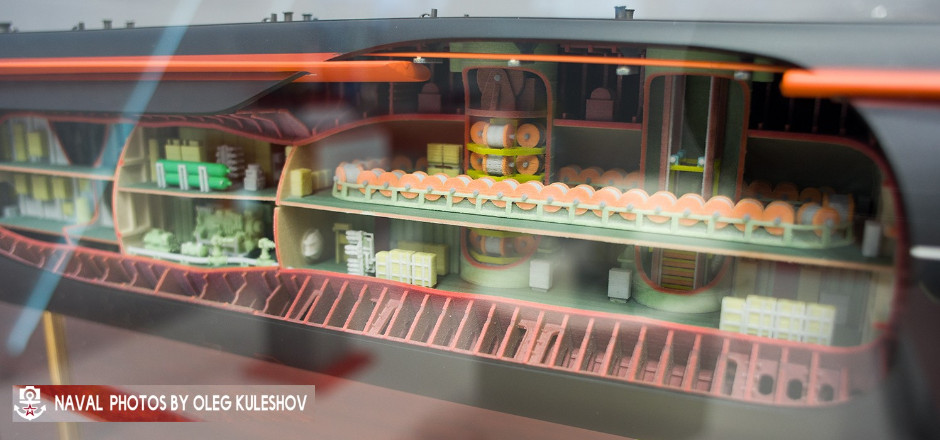
The boat is also equipped with a vertical hanger in the bow for a large remote operated vehicle (ROV):
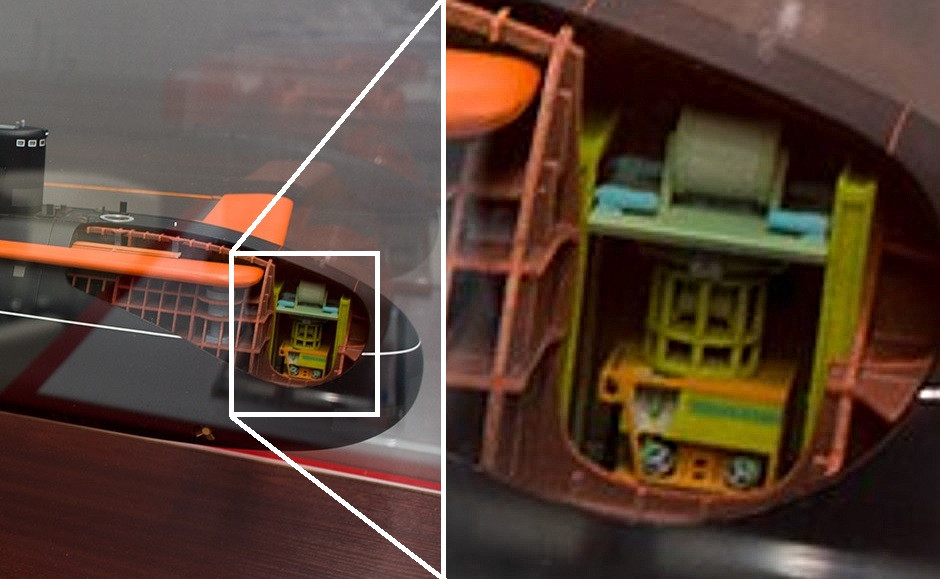
I have not been able to positively identify the ROV in the design model but it is possibly a Russian design based on existing Western ROVs already in service with Russia. These are mostly British in origin, such as the Hydrovision Venom, Perry-Slingsby Triton-TXLX and SeaEye Tiger.
The Seismic Survey submarine will operate as part of a wider ICEBERG network of underwater components for hydrocarbon and mineral extraction. The ICEBERG project to explore potential hydrocarbon technologies in the arctic is funded by the Foundation for Advanced Studies, and has been reported in Russian media for some time and was showcased at the Arctic – Territory Dialogue (Арктика - территория диалога) exhibition in Arkhangelsk, Russia, in March 2017. Other components include autonomous nuclear power plants, AUVs (Autonomous Underwater Vehicles, aka UUV in Western parlance) and drilling rigs.
Russian graphic from April 2017 showing some components of Iceberg. Translation thanks to @Trawler (Twitter)
Although the role of the new submarine is positioned as purely civilian, even Russian State Media points to military applications. For example assisting with sea-floor terrain maps to aid navigation and positioning of elements of the new HARMONY (Гармония) underwater sonar tracking system, some of which Russia intends to place under the arctic (example izvestia.ru (In Russian)).
The World's ONLY Guide to
Narco Submarines
10 years of research, analyzing over 160 incidents, condensed into a handy guide. This unique book systematically breaks down the types and families. With detailed taxonomy, recognition 3-views, profiles and photos. Available on Amazon
Related articles (Full index of popular Covert Shores articles)

 Russian unbuilt spy submarine MPS
Russian unbuilt spy submarine MPS

 BS-64 Podmoskovye Special Mission (spy) Host Submarine
BS-64 Podmoskovye Special Mission (spy) Host Submarine

 Project 09852 Belgorod Special Mission submarine (spy sub)
Project 09852 Belgorod Special Mission submarine (spy sub)

 Yantar spy ship loitering over undersea cables
Yantar spy ship loitering over undersea cables
 Russia seeks submarine advantage in Arctic (SHELF system, GUGI special mission subs)
Russia seeks submarine advantage in Arctic (SHELF system, GUGI special mission subs) 
 HUSKY Class future attack submarine
HUSKY Class future attack submarine

 USS Parche spy sub par-excellence
USS Parche spy sub par-excellence

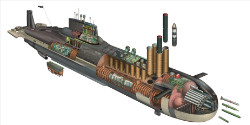 Russian Typhoon Class SSBN
Russian Typhoon Class SSBN

 P.09851 KHABAROVSK and KANYON (Status-6)
P.09851 KHABAROVSK and KANYON (Status-6)

 Russian Losharik spy sub
Russian Losharik spy sub

 Project 1910 UNIFORM Class deep diving spy sub
Project 1910 UNIFORM Class deep diving spy sub

 USS Halibut
USS Halibut

 USS Seawolf (SSN-575)
USS Seawolf (SSN-575)

 Russian X-RAY Class spy sub
Russian X-RAY Class spy sub

 Russian Sarov experimental sub
Russian Sarov experimental sub





